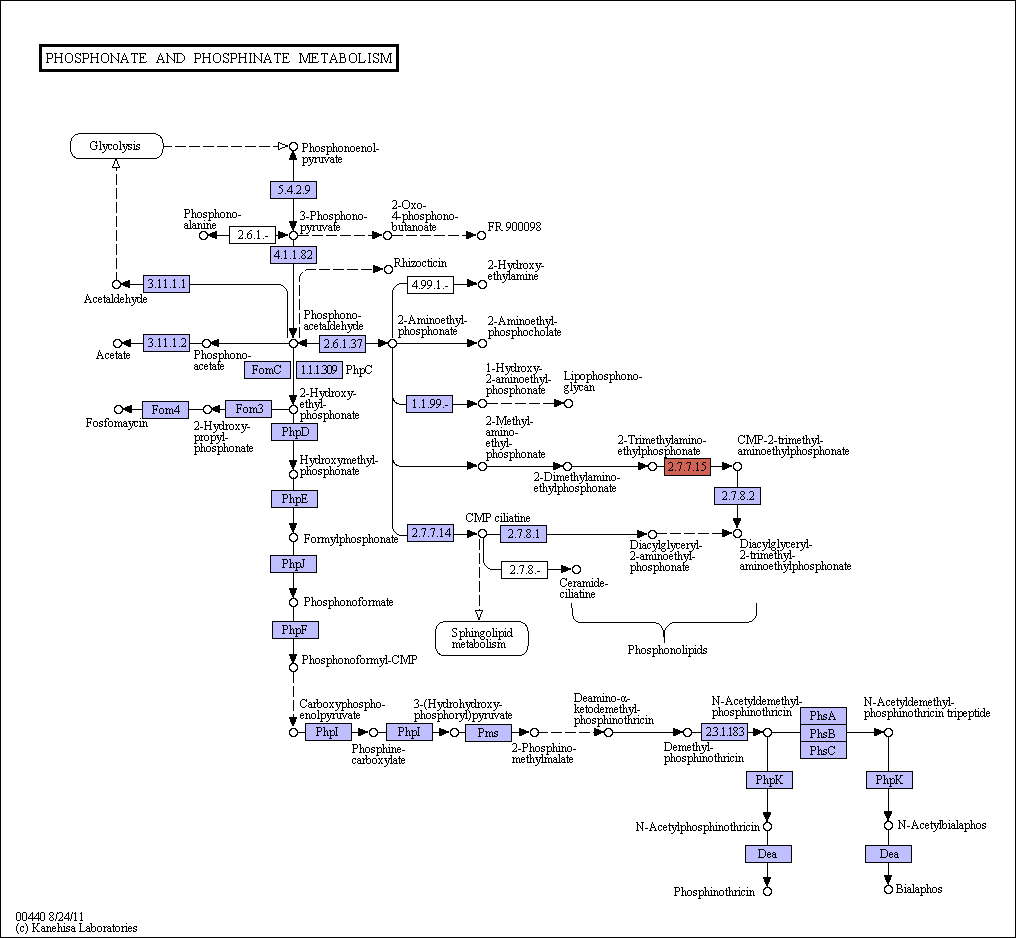|
Natural products containing carbon-phosphorous bonds, so-called C-P compounds, are derivatives of phosphonate and phosphinate with substitution of alkyl group for hydrogen of phosphorus-hydrogen bonds. C-P compounds have been found in many organisms, but only protists and bacteria, mostly Actinobacteria, have biosynthetic capacity. A common reaction in the biosynthetic pathway is C-P bond forming reaction from phosphoenolpyruvate (PEP) to phosphonopyruvate (PnPy) catalyzed by PEP phosphomutase. 2-Aminoethylphosphonate (AEP) is the most abundant C-P compound in the natural world. AEP derivatives include phosphonoprotein, phosphonoglycan, and phosphonolipid. Other known C-P compounds are bioactive substances used in medicine (antibiotics) and agriculture (herbicide) such as fosfomycin, FR-33289, rhizocticin, and bialaphos. |
 Phosphonate and phosphinate metabolism - Reference pathway (KO)
Phosphonate and phosphinate metabolism - Reference pathway (KO)

 Phosphonate and phosphinate metabolism - Reference pathway (KO)
Phosphonate and phosphinate metabolism - Reference pathway (KO)

